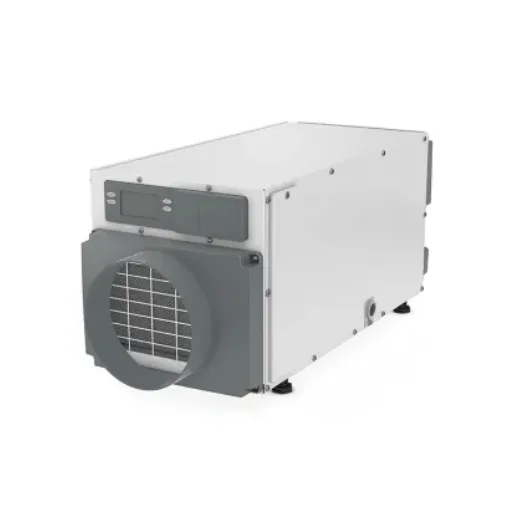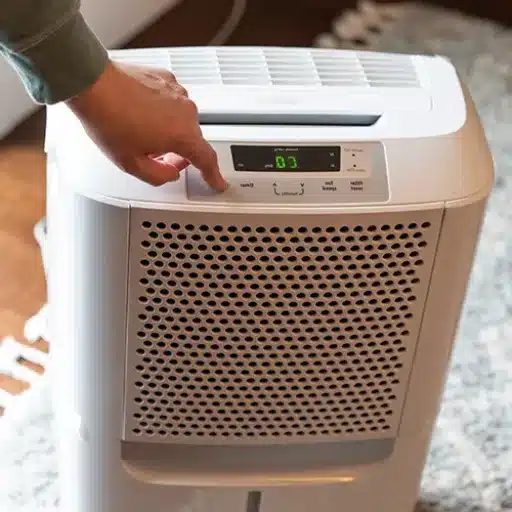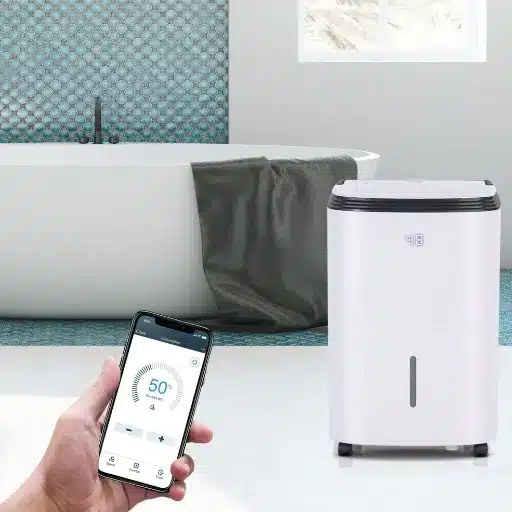Dehumidifiers are essential tools for maintaining a comfortable and healthy living environment by reducing excess moisture in the air. However, not all dehumidifiers are created equal, and choosing the right type for your home can be a challenge. This guide will explore the two main types of dehumidifiers—desiccant and compressor—by comparing their key features, advantages, and limitations. We’ll examine how they work, their energy efficiency, suitability for different climates, and specific use cases to help you determine which option aligns with your needs. By the end of this post, you’ll have a clear understanding of the differences and be ready to make an informed decision for your home.
What is a desiccant dehumidifier and how does it work?
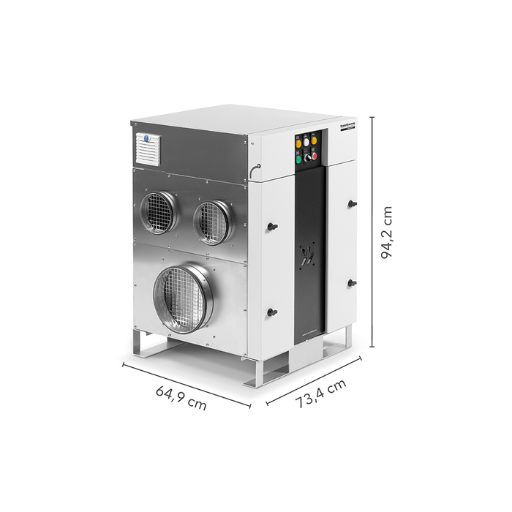
A desiccant dehumidifier operates using a moisture-absorbing material, such as silica gel, to extract humidity from the air. As air passes through the device, the desiccant absorbs the moisture, leaving the air drier. These dehumidifiers do not rely on refrigeration, making them lightweight, quieter, and effective even in lower temperatures. This makes them an excellent choice for colder climates or spaces like garages, basements, and RVs. Once the desiccant is saturated, the unit regenerates the material by using heat to release the captured moisture, ensuring continuous operation.
Understanding the desiccant wheel technology
Desiccant wheel technology operates by utilizing a rotating wheel coated with a desiccant material, such as silica gel. This wheel continuously absorbs moisture from the air as it passes through the system. The process involves two key airstreams—one for dehumidification and the other for regeneration. The moist air is drawn into the dehumidification side, where the desiccant captures the humidity, leaving the air much drier. Simultaneously, the regeneration side heats the desiccant, releasing the trapped moisture and preparing the wheel for reuse. This cyclical operation makes desiccant wheel technology highly efficient, especially in environments with low humidity or colder temperatures. Its energy efficiency and ability to maintain precise humidity control make it a valuable choice across industries, including food processing, pharmaceuticals, and storage facilities.
How desiccant dehumidifiers absorb moisture from the air
Desiccant dehumidifiers absorb moisture from the air using a hygroscopic material, typically silica gel, that attracts and holds water vapor. The process begins as moist air is drawn into the dehumidifier and passes over a rotating desiccant wheel. The desiccant captures the water molecules from the air, effectively reducing its humidity. Meanwhile, a separate stream of heated air passes over another portion of the rotating wheel, regenerating the desiccant by releasing the absorbed moisture and expelling it as vapor through an exhaust outlet. This continuous rotation allows the dehumidifier to operate efficiently, maintaining consistent humidity control. This technology is especially effective in colder climates and environments with low ambient humidity.
Advantages of silica gel in humidity control
Silica gel offers several advantages when it comes to controlling humidity in various settings. Firstly, it has a high adsorption capacity, capable of absorbing up to 40% of its weight in moisture, making it highly effective in maintaining dry conditions. Secondly, its versatility allows it to be used across a wide range of applications, from industrial equipment to consumer products such as packaging, electronics, and pharmaceuticals, ensuring protection against moisture damage. Additionally, silica gel is reusable and environmentally friendly, as it can be regenerated by heating, restoring its moisture-absorbing abilities. Its non-toxic and non-corrosive nature further adds to its practicality, ensuring safety and compatibility with sensitive materials. These attributes make silica gel a reliable and efficient solution for humidity control.
How do desiccant dehumidifiers compare to compressor models?

Desiccant dehumidifiers and compressor models differ significantly in their operation, efficiency, and ideal usage environments. Desiccant dehumidifiers use a moisture-absorbing material, making them highly effective in colder temperatures where compressor models often struggle. They are quieter, lighter, and more portable, which makes them ideal for smaller spaces or specific applications such as RVs and basements. However, they typically consume more energy compared to compressor models. On the other hand, compressor dehumidifiers work by cooling moist air to condense water, performing best in warm and humid conditions. They are often more energy-efficient in such climates and are suitable for larger spaces, but their performance diminishes in low temperatures. Choosing between the two depends on the specific needs of the environment and energy preferences.
Desiccant vs compressor dehumidifiers: Key differences
Understanding the differences between compressor and desiccant dehumidifiers will assist you in making an informed decision. While Desiccant Deviators are not as effective as Compressor Dehumidifiers in warm regions, they are better in cold areas, making them suitable for basements and unheated spaces. Moreover, they function better at lower temperatures, and their quiet and lightweight construction makes them ideal for small spaces; however, their operational costs are high, and they consume large amounts of energy.
Compressor Dehumidifiers are most effective in hot and humid climates because those are the areas where they use the least amount of energy. Additionally, these devices are more efficient at removing moisture, making them suitable for larger spaces, which results in greater volume dehumidification. However, they do not fare well in colder conditions and are generally noisier and heavier than the Desiccant models.
To summarize, the energy preference, the area size, and the climate determines the model preference. Smaller cold regions with minimal demand prefer Desiccant models, while larger warm regions are better off with the energy-efficient Compressor models.
Which type of dehumidifier is best for different environments?
Every model of dehumidifier has its distinguishing characteristics that are more appropriate for certain applications or locations. Evaluating the temperature, humidity level of the selected region, and the spatial dimensions will aid in selecting the appropriate model. With regard to heater function, desiccant dehumidifiers perform best in cold regions and unheated spaces like garages and basements, because they have lower operating temperatures. These models are quieter, easier to move around with, and efficient in low to moderate moisture areas.
They are also ideal for living spaces and homes in tropical climates: larger areas and warmer and more humid regions are best suited for compressor or refrigerant dehumidifiers. Their effectiveness and efficiency at dealing with large amounts of moisture makes them suitable for areas with high humidity or working housing humidity issues. Their best operating temperatures are above 60° F, which makes the cold a disadvantage.
Energy efficiency: Desiccant and compressor dehumidifiers compared
Understanding the energy use of both types of dehumidifiers includes reviewing their differences in operation. For example, in hot and humid conditions, compressor dehumidifiers are much more energy efficient. They capture moisture from the air by cooling it, condensing the moisture, and using less energy as their surroundings become more favorable. These units are ideal for warm climates and for large spaces that require cooling all year round.
On the contrary, desiccant models are better below certain temperatures which can be difficult for traditional compressor models. They are usually more expensive in terms of power costs, but combined with low temperature capability and fast moisture removal, it sometimes makes it justifiable. These units are best suited for cold environments or for situations like drying basements and garages in winter.
To wrap up, optimizing energy efficiency comes down to choosing the suitable model based on the environmental conditions and one’s personal usage. If costs are a concern, the best options would be the compressor model for warm weather and a desiccant model for the cooler temperatures.
What are the best applications for desiccant dehumidifiers?

Desiccant dehumidifiers excel in environments where temperatures are low and moisture removal is still essential. They are particularly effective in unheated spaces such as garages, basements, crawl spaces, or storage areas during colder months. Additionally, they are well-suited for industrial applications where precise humidity control is critical, such as in warehouses or manufacturing facilities. Their ability to function efficiently in cold conditions while preventing frost build-up makes them ideal for situations where traditional compressor models may struggle.
Using desiccant dehumidifiers in basements and low-temperature areas
Desiccant dehumidifiers are exceptionally effective in managing humidity in basements, garages, and other low-temperature areas. Unlike traditional refrigerant models, they do not rely on cooling coils to remove moisture, making them highly efficient in colder environments. Their design uses absorbent materials to extract water vapor directly from the air, ensuring consistent performance even at sub-zero temperatures.
Additionally, desiccant dehumidifiers prevent issues such as condensation on walls, mold growth, and damp smells, which are common in unheated spaces. They are also quieter, more portable, and typically lightweight, making them convenient for residential and industrial use alike. For spaces like basements, where moisture problems can lead to structural damage or health hazards, desiccant models provide a reliable and energy-efficient solution.
Desiccant dehumidifiers for home: Ideal room sizes and conditions
Desiccant dehumidifiers are well-suited for various room sizes and specific environmental conditions. They excel in smaller to medium-sized spaces, typically up to 750 square feet, though some advanced models can handle larger areas. Ideal for cooler environments, desiccant dehumidifiers perform efficiently in temperatures as low as 33°F, unlike refrigerant models which struggle in cold conditions. This makes them perfect for garages, basements, poorly insulated rooms, or homes in colder climates.
These dehumidifiers work effectively in spaces with moderate to high humidity levels, often exceeding 60%. They also perform well in environments where maintaining consistent dryness is crucial, such as in preventing mold, mildew, and condensation. If your space is prone to dampness year-round or lacks heating, a desiccant dehumidifier is an excellent choice for maintaining air quality and protecting both your property and health. For larger rooms, it’s advisable to check the cubic foot coverage of the model to ensure optimal performance.
Commercial applications of desiccant dehumidification technology
Desiccant dehumidification technology is widely utilized across various industries due to its efficiency in managing humidity levels, particularly in challenging environments. One of the primary applications is in food processing and storage, where controlling moisture is critical to preserving product quality, preventing spoilage, and ensuring compliance with safety regulations. Pharmaceutical manufacturing also benefits from desiccant systems, as precise humidity control is necessary to maintain the efficacy and stability of medicines, as well as to safeguard sensitive equipment.
Additionally, industries such as electronics and aerospace rely on these systems to eliminate condensation risks and protect delicate components from moisture damage. Desiccant dehumidifiers are also essential in water treatment plants, where they prevent corrosion and mold growth in pumping stations and other facilities. Furthermore, the technology is often applied in construction projects, particularly for drying spaces or materials, ensuring optimal conditions for coatings, paints, or adhesives to cure and bond effectively. The versatility and reliability of desiccant systems make them invaluable for maintaining consistent environmental control in commercial and industrial applications.
How to choose the right desiccant dehumidifier for your needs?
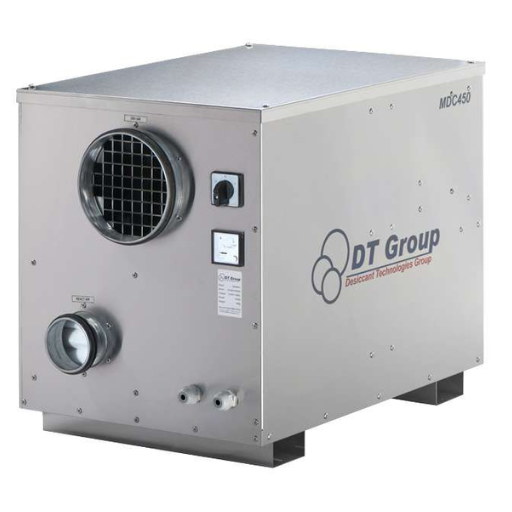
As is the case with any appliance, the functionalities of a desiccant dehumidifier vary from one model to another, and selecting the most suitable one requires doing a bit of homework.
First of all, it is important to understand the usage requirements. Real world parameters like temperature, moisture levels, and desired humidity greatly affect the efficiency of the device. If it is intended for industrial and commercial use, focus on the amount of room it can cover, energy efficiency, power consumption, and the ability to withstand use. For residential use, proper portability and automated controls can be of great help.
Understanding pint capacity and sq ft coverage
Pint capacity is defined as the quantity of moisture the dehumidifier can extract from the air in a 24-hour cycle, usually expressed in terms of pints. The size of the space and the humidity level present will primarily determine the correct pint capacity. For example, smaller rooms can get by with a dehumidifier that has a capacity of 20 to 30 pints, while larger areas or those with a lot of dampness may require models with 50 to 70 pints or more.
Square foot coverage is used to describe the specific area a dehumidifier is capable of servicing effectively. This is often done my manufacturers to enable their clients match an appropriate model to the size of their room. For a unit that is rated for 300 to 500 sq ft, that unit is best suited for small to medium sized rooms while units rated for upwards of 1,500 sq ft are preferred for basement or open plan areas. It is also important to select a unit that meets the area requirements but also consider other aspects like ceiling height, airflow, and the source of the humidity.
Features to look for: Continuous drain, water tank size, and portability
Continuous Drain
With the continuous drain feature, you can connect a hose to the dehumidifier so water is directly sent to a sink or drain. This is easier than having to manually empty the water tank, making it useful for high humidity areas or for people who want a simpler solution. It works best for places like basements that require non-stop functioning.
Water Tank Size
The water tank size dictates how regularly you will need to empty it. Greater tanks decrease the maintenance, but could increase the bulky nature of the unit. Smaller tanks are more compact, but require frequent emptying. Based on the dehumidifier’s daily capacity and the amount of moisture present, pick a tank size. If you work with high humidity areas, get a medium to large water tank.
Portability
If you intend to shift the dehumidifier from one room to another, portability becomes crucial. Choose models that have caster wheels, built in handles, or are lightweight. For temporary use, compact models are excellent, as these allow you to position the dehumidifier wherever it is most effective.
Rechargeable desiccant dehumidifiers: Pros and cons
Rechargeable desiccant dehumidifiers rely on a desiccant material to absorb moisture in the air which can be recharged by simply heating up the material to release the trapped moisture. Below are their key advantages and disadvantages:
Pros
Energy Efficiency: These devices usually consume less energy when compared to other electric dehumidifiers, contributing to cost savings in the long run.
Silent Operation: They work without compressors which makes them extremely quiet, perfect for use in bedrooms and offices.
Portability: Their compact and light construction makes them easy to move which is great for smaller spaces like closets, cabinets or cars.
No Continuous Power Needed: These devices do not need to be plugged in in order to operate which makes them ideal for use in areas without access to power.
Cons
Limited Capacity: Due to low moisture absorption capabilities, rechargeable desiccant models are best suited for very small spaces compared to electric counterparts.
Frequent Recharging: They need to be recharged often which is not suitable for high humidity environments.
Restricted Durability: Over time, the desiccant material may wear out reducing its ability to absorb moisture, impacting performance and making it necessary to replace the material.
These desiccators are effective for dealing with moisture in small enclosed areas. However, they are not ideal for large spaces or those with high levels of humidity.Evaluate your requirements in order to judge if this kind of dehumidifier is the best solution for your needs.
What maintenance is required for desiccant dehumidifiers?
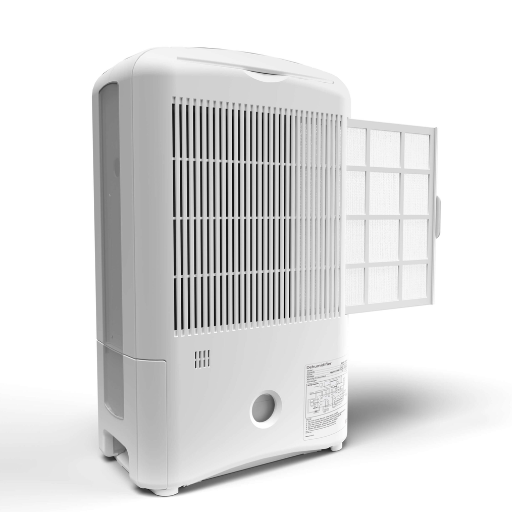
Maintenance for desiccant dehumidifiers is relatively straightforward but essential for optimal performance. Start by regularly cleaning and inspecting the air filters to ensure proper airflow and prevent blockages. Empty the water collection reservoir frequently if the device has one, and check for any signs of mold or residue. Additionally, inspect the desiccant material for wear or contamination and replace it as needed based on the manufacturer’s guidelines. It’s also a good idea to wipe down the exterior to keep the unit free from dust and debris. By following these simple steps, you can prolong the lifespan and efficiency of your desiccant dehumidifier.
Cleaning and replacing the desiccant wheel
The performance of a dehumidifier is maintained by ensuring proper cleaning and replacement of the desiccant wheel. First and foremost for safety, the unit must be turned off. According to the manufacturer’s instructions, replace the desiccant wheel. It may be cleaned using a soft brush or compressed air. Particulate matter may be cleaned from the surface of a wheel but scrubbing, no matter how gentle, should be avoided as it may scratch the surface of the underlying material. If the wheel is heavily contaminated or shows signs of wear, a replacement is recommended. Then remove the old one and make sure that your replacement is compatible before securely installing it into place. The manual must be consulted for these steps. Regular maintenance of the wheel not only prevents problems, but improves the overall efficacy of the device.
Troubleshooting common issues with desiccant dehumidifiers
The unit is not turning on
Ensure the unit is properly plugged in and that the outlet is functioning. Check for tripped circuit breakers or blown fuses. If the problem persists, inspect the power cord for damage or consult a technician.
Reduced dehumidifying performance
Verify that the air filters are clean and the desiccant wheel is free of buildup. Blockages in air inlets or outlets can hinder airflow; clearing these obstructions often restores performance. Ensure the room’s humidity is within the unit’s operating range.
Unusual noises during operation
Rattling or grinding sounds may indicate loose components or a damaged desiccant wheel. Check for any foreign objects in the system or consider professional maintenance if the noise persists.
Water not collecting or draining improperly
If water is not collecting in the tank or draining correctly, inspect the drainage system for clogs or leaks. Ensure that the float switch is not stuck, as this could prevent water from flowing into the tank. For continuous drainage, confirm that the hose is connected securely and routed correctly.
Persistent odors
Lingering smells may result from mold or bacterial growth in the unit. Clean the filters and internal parts following the manufacturer’s guidelines, and use disinfectants if necessary. Ensure the unit dries completely after cleaning.
By keeping these troubleshooting steps in mind, users can address common issues effectively and maintain optimal performance of their desiccant dehumidifiers.
Can desiccant dehumidifiers help with odor and mold control?
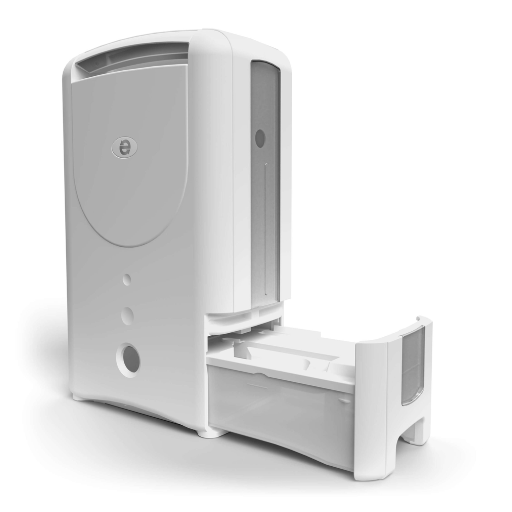
Yes, desiccant dehumidifiers can help with odor and mold control. By reducing excess moisture in the air, they create an environment that is less conducive to mold and mildew growth, which are common sources of unpleasant odors. Additionally, some models are designed to incorporate air purification features, further assisting in reducing airborne bacteria and fungi that contribute to odors. Regular maintenance, such as cleaning filters, ensures optimal performance in controlling both odor and mold.
How desiccant dehumidifiers combat musty odors
Desiccant dehumidifiers combat musty odors by effectively reducing humidity levels, which disrupts the conditions needed for mold, mildew, and bacteria to thrive. These microorganisms are often the source of musty smells, especially in poorly ventilated or damp areas. Unlike refrigerant dehumidifiers, desiccant models perform efficiently even in cooler temperatures, making them ideal for basements, crawl spaces, and other areas prone to musty odors. Many units feature advanced air filtration systems to capture odor-causing particles and improve overall air quality. Regular cleaning and timely replacement of filters further enhance their ability to eliminate lingering smells. By addressing the root cause—excess moisture—desiccant dehumidifiers provide a long-lasting solution to musty odors.
Preventing mold growth with proper humidity control
To reduce the possibility of mold infestation, it is essential to keep humidity within the range of 30 to 50 percent. Mold spores can develop and become problematic in overly moist areas that are closed off or poorly ventilated. Dehumidifiers are one of the most effective ways to control humidity. Moreover, proper ventilation in moisture-laden areas such as the kitchen, bathroom, and basement reduces moisture accumulation. Regular maintenance of potential leaks, whether through plumbing or roofing, also helps in reducing mold risks. Pairing moisture control efforts with frequent cleaning using mold-resistant paints and drywall strengthens defenses against mold infestations. Adopting these approaches will effectively manage mold growth, improve air quality, and enhance health and well-being.
References
Frequently Asked Questions (FAQ)
Q: What are the main differences between desiccant and compressor dehumidifiers?
A: Desiccant dehumidifiers use desiccant technology to absorb moisture from the air, while compressor dehumidifiers condense humid air into water using a compressor and evaporator. Desiccant models are generally quieter and perform better in lower temperature environments, whereas compressor dehumidifiers are more energy-efficient in high humidity and warmer conditions.
Q: How effective are desiccant dehumidifiers in high humidity conditions?
A: Desiccant dehumidifiers can effectively remove moisture in high humidity conditions, but they are typically more suited for environments with lower humidity levels and cooler temperatures. In very high humidity, a compressor dehumidifier may be more efficient.
Q: Can desiccant dehumidifiers be used in a gun safe?
A: Yes, desiccant dehumidifiers are ideal for use in a gun safe due to their ability to maintain low humidity levels and prevent rust and corrosion without generating heat.
Q: Are there any maintenance differences between desiccant and compressor dehumidifiers?
A: Desiccant dehumidifiers generally require less maintenance as they do not have a compressor or condenser to clean. Compressor dehumidifiers may need regular cleaning of the condenser and evaporator coils to ensure efficient operation. Both types may require occasional checking of the drain hose or moisture absorbers.
Q: How does temperature affect the performance of desiccant and compressor dehumidifiers?
A: Temperature significantly affects dehumidifier performance. Desiccant dehumidifiers perform well in lower temperatures (around 15°C to 20°C), while compressor dehumidifiers are more effective in higher temperatures and ambient conditions.
Q: What should be considered when buying a dehumidifier for commercial use?
A: For commercial dehumidifiers, consider the unit’s capacity for moisture removal, energy efficiency, operating temperature range, and whether it includes features like a drain hose for continuous operation. The choice between a desiccant or compressor dehumidifier will depend on the specific needs of the commercial environment.
Q: Can a rechargeable dehumidifier be a suitable option for small spaces?
A: Yes, a rechargeable dehumidifier can be an effective and convenient option for small spaces like closets or vehicles. They use moisture absorbers to dehumidify the air and can be recharged, making them portable and low-maintenance.
Q: What are the advantages of using a desiccant dryer in colder climates?
A: Desiccant dryers are advantageous in colder climates as they do not rely on a condenser and can efficiently dehumidify at lower temperatures without needing to defrost, thus providing consistent dry air.
Q: How do dehumidifiers handle condensate in different models?
A: Compressor dehumidifiers typically collect condensate in a tank or expel it through a drain hose. Desiccant models absorb moisture from the air into the desiccant material, which may need to be periodically dried or replaced, depending on the model.

